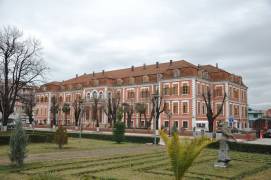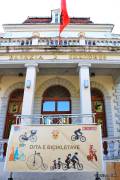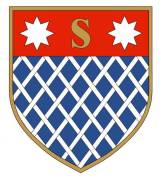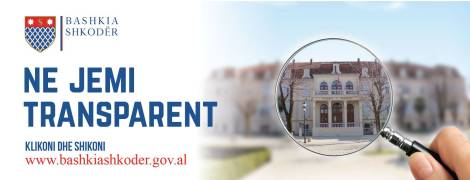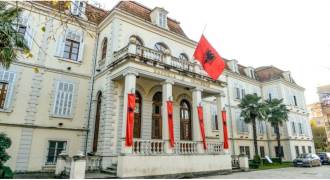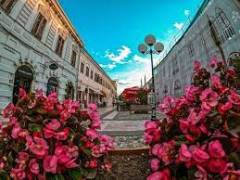Description
Shkodra is bordered to the north by the Municipality of Malësi e Madhe, to the west by Mali e Black, to the east by the Municipality of Tropoja, to the south by the Municipality of Vau i Deja and part of it by the Municipality of Lezhë. The center of this municipality is the city of Shkodra. According to the 2011 Census, the municipality of Shkodra has a population of 135,612 inhabitants. Meanwhile, according to the Civil Registry, this municipality has 200,889 inhabitants. The new municipality covers an area of 872.71 km2, with a density of 230.18 inhabitants/km2. The new municipality of Shkodra has 11 administrative units. It has a city and 93 villages under its administration. The geographical position of the municipality of Shkodra and the climatic conditions give it advantages in the development of agriculture and tourism. Within a space of 100 km, the region presents optimal natural conditions for coastal and lake tourism, mountain tourism, cultural tourism as well as agro-tourism.
Shkodra Castle
Known in history as "ROZAFA". It is located at the southern entrance of the city, in a strategic position, surrounded by the Buna, Drini and Kiri rivers. The surrounding walls are 880m long that surround an area of 35000m2. It is the largest fortress in Albania and among the largest in the Balkans.
Archaeological excavations show that the castle is one of the earliest settlements in the Shkodra basin, dating back 4,000 years. Visitors can see numerous objects and monuments belonging to different historical periods. The name of the fortress is related to a legend of its construction, the walling of a woman named Rozafa, a symbol of endurance, sacrifice and heroism of the people of Shkodran. (Shkodra, A.Parruca)
The shape that Shkodra's castle has today, it took during the rule of the Balshais (XIV century). In this castle we find traces of the classical period, the Middle Ages and the last century. The medieval walls, built with mortar, rise above the Illyrian walls and follow the irregular line of the terrain. Inside the walls of the castle there are two high walls, which divide its surface into three courtyards. The main gate is located on the side where the slope of the hill is smaller, behind it there is a long and wide gallery which on both sides has four spaces that at the time served as protection. After passing through this gallery you find in front of another gate and you enter the first courtyard where there are a series of fortified buildings. The second courtyard occupies a larger area and is located in the central part of the castle. The third courtyard played the role of the castle where the military garrison gathered. These courtyards communicate with each other with small gates. To get out of the castle there were several secret exits which are no longer working.
This castle, due to its importance, deserves the attention of the relevant institutions for the protection of the cultural and historical values that it inherits from generation to generation. In the fortifications and other construction objects, ancient, medieval and even traces of the Bushatli period are still preserved today. In the objects that can be visited, apart from the fortification system, we mention: Saint Stephen's Church, which was later turned into a mosque, the Captain's Office, the Prison, Saranxha and the secret exits. From its walls you can admire the magnificent and picturesque views of Lake Shkodra, the rivers Drin, Buna and Kir.
Buna Bridge
The Buna Bridge together with the Bahçallek Bridge have been the land connections of the city of Shkodra with other parts of Albania.
Buna Bridge is an Ottoman work built during 1499-1500. It was built with wooden legs. In 1899, this bridge was rebuilt by the Ottoman governor in Shkodër at that time. On the occasion of the inauguration, a memorial was erected at the edge of the front of the bridge. This pyramid-shaped stone is kept in the city museum. (Shkodra and weather, H. Bushati)
Bahçallek Bridge
The Bahçallek Bridge is a construction of the Ottoman invaders, the exact time of its construction is not known. In the era of the Ottoman occupation, the Bahçallek bridge was auctioned for a toll charged for crossing. This tax was used to cover the costs of repairs and reconstruction of the bridge in necessary cases. This bridge could not be crossed at night, except in an emergency.
The system of the bridge was made after the departure of the Ottoman rule from Albania. (Shkodra and the weather, H. Bushati)
The XIX century clock tower
The Clock Tower known in history as the English Clock belongs to the period of the medieval aristocracy. It is the only building that still exists from Shkodra's ancient period. The clock tower, together with the adjacent house, were built with the funds of the English Lord Paget, whose main goal was to spread the Protestant religion and establish the Anglican Church in Albania, based in Shkodër. his religious mission, instead of the front bell for the tower, he brought a large clock with three fields to be seen from afar. At certain hours its resounding krisma was heard. The manor house consisted of 15-16 rooms. The courtyard was closed



